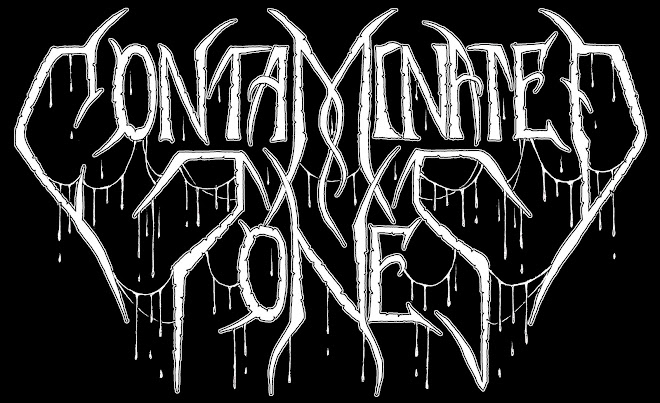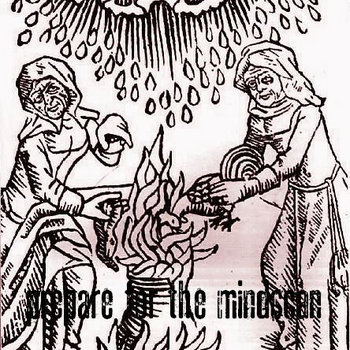Love is such a bizarre album, even by today's standards, that if it had come out when it was recorded in 1994, it surely would have been seen as way ahead of it's time, a huge step forward for the Swedish Gothenburg scene and it would have been a major influence on all melodic death metal and metal-core afterwards to an extent that it might have actually inspired other bands to experiment with the mundane and stereotypical dross usually offered by the genres. This is an album I would essentially dub proto-metalcore. As a whole, Leukemia's album would have had a huge amount of cross-appeal within the underground music scene where it's eclectic mix of Death Metal, Gothenburg Melodic Death Metal, Industrial, Doom and Progressive Metal would have earned it accolades before the mass exodus of individuals with actual independent musical-taste buds fled the scene leaving only those lingering to easily identifiable bands and genres. Love sounds what Pestilence would have put out two albums after Spheres if they hadn't gone on hiatus and if they threw in a heavy splash of hardcore and At The Gates influences.
The greatest majority of the music, in particular tracks like "Sad" or "Hurt" incorporate a huge swath of styles all rolled into one rolling wave of excellently organized weirdness. You'll encounter mechanized drums, bongos, samples, a huge array of bizarre melodies and leads, various guitar tones and sounds at times extremely dense death metal, other times extremely light and airy spaced out meanderings. Hell, "Roses," seems to harbor disco influences. There are a huge number of awesome leads across the album such as in the opening track "Emotionally Dead," and also second track "Murder." With all the material here, it's obvious that Leukemia's talents as musicians inspired them to really go off the deep end with the album instead of playing it safe in the vein of their two previous efforts, "Suck My Heaven" and "Grey-Flannel Souled," which while both exhibiting touches of the bizarre were very much contemporary death metal albums to the rest of the Swedish scene. Perhaps this was the reason they changed the name of the band originally when they recorded the album.
One of the most notable highlights on Love is the Jocke Granlund's phenomenal vocal performance. He offers such a landscape of styles ranging from the sweet and gentle clean vocals in "My Pain," bellowed and powerful booming commands in "Roses," the angry and bitter hardcore vocals in "Regret" or "I Remain Silent" - a song with my favorite vocal moment on the album where Granlund simply yells "Why don't you just kill yourself?!" over and over again - or the bassy low growls of more typical death metal which complete the rest of the tracks. It's like staring into the mind of someone with split personality disorder and hearing their thoughts as they hear them in their head. It presents the album as something particularly painful and vocalist Grandlund as an emotionally fragile, bitter and resentful advocate for his own problems which due to the presentation, decipherable lyrics and content that I can delineate must be there in the not so dark shadows.
My favorite tracks here alternate between "Murder" and "Sad" each one probably on the far end of the spectrum of weirdness. "Murder" is probably the most ordinary, even though it has a serpentine structure like a snake in a knot that eventually comes back to eat it's tail. It opens with a deep melody and the sweet caress of a slowly tapped guitar lead with a sullen melody. It's followed by a range of riffs from tremolo to slower death / doom to a more generic (by today's standards) metal-core riff. A lead section with a memorable middle eastern flair exists a little more than halfway through the track. The last minute returns to the a few of the earlier riffs. It's an excellent written track that doesn't look track of itself. With "Sad" there are no words to explain it. The bass riffs are wild and the atonality of the tracks main intro riff breaks off and on in conjunction with the rest of the more industrial cadences. The synthesizers really place the track in a league of it's own. I guess a good comparison would be to Damage Done era Dark Tranquility if they spent a whole summer with Laibach or something. The almost unbearably simple staccato nature of the vocals over the track is an exercise in dichotomy.
Either way, if you're even moderately interested in either early melodic Death Metal or the Swedish Death Metal scene, Leukemia are band not to be missed. They offer something few other bands offered at the time - most notably a sense of adventurousness. Love is a monument to that attribute. While most of the Gothenburg bands were happy reiterating and rehashing, Leukemia were ready to revitalize and rejuvenate their own sound. If nothing less, Love is worth a listen for the variety, excellent musicianship of bassist / guitarist / drum programming of Kentha Philipson, guitarist Tobbe Ander and the awesome Jocke Granlund on vocals who's range and diversity on this album are second to none.






















